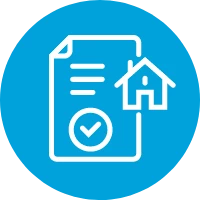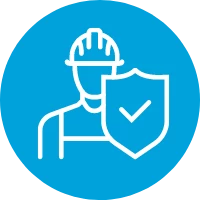The Most Common Roof Problems After Heavy Rain (and How to Fix Them Fast) Content
When the rain really settles in over the Seattle area, your roof is working overtime. Most of the time it does that job quietly in the background—but after a big storm, small issues can turn into active leaks, stains on your ceiling, or hidden damage you won’t see until it’s expensive to fix.
Elite Roofing has spent more than 25 years helping homeowners across King, Snohomish, and Pierce counties navigate heavy-rain roof problems. From emergency leak calls to long-term repairs and replacement, our team knows how Pacific Northwest weather affects every part of your roof—and how to get it back to normal fast.
In this guide, we’ll walk through the most common roof problems after heavy rain, what to look for around your home, and when it’s time to call in the pros.
Why Heavy Rain Is Hard on Seattle-Area Roofs
Our local climate is tough on roofing systems. Long periods of rain, wind-driven storms, and constant moisture can:
- Push water up under shingles and flashing instead of straight down the roof.
- Overwhelm older or undersized gutter systems, causing overflow and leaks.
- Expose weak points around skylights, vents, and chimneys.
- Keep roof surfaces and attic spaces damp, encouraging mold and rot.
- Turn small, existing issues into active leaks in just a few hours.
If you’ve just been through a heavy rain event, it’s smart to schedule a professional roof inspection or emergency roof service before minor issues turn into major repairs.
1. Active Roof Leaks and New Water Stains
The most obvious sign of roof trouble after heavy rain is water where it doesn’t belong—drips, stains, or discoloration on ceilings and walls. Watch for:
- New or growing yellow-brown stains on ceilings or upper walls.
- Peeling paint, bubbling drywall, or soft spots around corners and light fixtures.
- Water dripping around recessed lights, fans, or smoke detectors.
- Damp spots around skylights, chimneys, or roof penetrations.
If you see any of these, the leak has already worked its way past your roofing material and into the home. The fastest way to stop further damage is to bring in a professional for targeted leak detection and repairs.
For active leaks during a storm or standing water inside your home, call for emergency roof services right away so the area can be tarped, stabilized, and safely repaired.
2. Hidden Attic Moisture and Mold
Not all heavy-rain damage shows up in your living room. Sometimes the first place water collects is in the attic. After a storm, it’s a good idea (if it’s safe) to peek into your attic and look for:
- Damp or matted insulation.
- Dark stains on the underside of the roof sheathing or rafters.
- Condensation on nails, metal connectors, or ventilation ducts.
- A musty or “earthy” smell that seems stronger after rain.
These can be signs of a slow leak, ventilation issue, or condensation problem that may require a professional roof inspection and possible leak repair before mold or structural damage spreads.
3. Damaged or Missing Shingles After Wind-Driven Rain
Heavy rain in the Seattle area rarely shows up alone—strong wind is often part of the package. Wind-driven rain can lift shingles, break their seal, or tear them completely off the roof. From the ground, look for:
- Shingles lying in your yard or driveway.
- Dark “bald” patches where granules or entire shingles are missing.
- Shingles that look curled, creased, or lifted at the edges.
- Exposed nail heads or shiny patches on the roof surface.
Damaged shingles are one of the most common sources of leaks after a storm. Elite Roofing can quickly evaluate your roof and complete needed roof repairs—and if the roof is nearing the end of its life, we can also provide options for full roof replacement.
4. Overflowing Gutters and Fascia Damage
During heavy rain, your gutters are your first line of defense. When they’re clogged, undersized, or damaged, water can back up under the shingles or pour over the sides, leading to:
- Water running down exterior walls or pooling at the foundation.
- Peeling paint or rot on fascia and soffits.
- Soil erosion, puddles, or basement moisture near the home.
- Visible sagging, leaks, or separations in the gutter runs.
If you notice any of these issues after a storm, it’s time to have your gutters checked. Elite Roofing provides complete gutter services and gutter systems for Seattle-area homes, including repair, realignment, cleaning, and full replacement designed for Pacific Northwest rainfall.
5. Skylight, Vent, and Chimney Leaks
Anywhere your roof is “cut” for a feature—like a skylight, vent, or chimney—there’s flashing designed to keep water out. Heavy rain, wind, and age can cause that flashing to fail. Warning signs include:
- Water stains or damp drywall around skylight wells.
- Drips or discoloration near plumbing or furnace vents.
- Musty smells or staining around a chimney chase.
- Visible gaps or rust in metal flashing from the ground.
These leaks can be tricky to diagnose without experience. Elite Roofing’s team regularly handles complex flashing and leak repairs, making sure water is routed properly around skylights, vents, and chimneys.
What to Do Right After a Heavy Rainstorm
You don’t need to be a roofing pro to catch early signs of trouble. Once it’s safe to go outside, you can:
- Walk the perimeter of your home and look for visible shingle damage, debris, or loose gutters.
- Check ceilings and walls in upper rooms for new stains, dampness, or peeling paint.
- Look in the attic (if safely accessible) for damp insulation, dark stains, or musty odors.
- Watch your gutters during the next rain—are they flowing freely or overflowing in spots?
- Take photos or short videos of anything that looks suspicious, especially for potential insurance claims.
If anything doesn’t look right, it’s time to bring in a professional. Elite Roofing offers prompt roof inspections, leak detection, and roof repairs tailored to Seattle’s heavy-rain conditions.
How Elite Roofing Fixes Heavy-Rain Damage Fast
When you call Elite Roofing after a storm, you’re getting a seasoned local team that understands how quickly water damage can escalate. Our process typically includes:
- Rapid response for active leaks: If water is entering your home, our emergency roof services and Rapid Response inspection and repair options focus on immediate protection.
- Comprehensive inspection: We assess your roof, gutters, and key details like flashing, vents, and skylights to find both visible and hidden issues.
- Clear, written estimate: You’ll receive a straightforward repair or replacement plan—no pressure, no surprises, and clear photos where helpful.
- Targeted repairs or replacement: Our crews handle everything from small leak fixes to full roof replacement and gutter repair & realignment.
- Insurance and financing support: We help document damage for your insurer and offer 0% down financing options (OAC) so you’re not forced to delay critical work.
Schedule Your Post-Storm Roof Check Today
If your home has just gone through a heavy Seattle rainstorm, don’t wait for small issues to turn into major repairs. A quick visit from a professional roofing team can save you thousands in water damage and give you real peace of mind.
Elite Roofing proudly serves homeowners across King, Snohomish, and Pierce counties with honest inspections, clear recommendations, and high-quality repairs and replacements built for our Pacific Northwest weather. Call (425) 482-0676 or request your free roofing estimate online today. Ask about our 0% down roofing and gutter financing options to get the work done now and pay over time.
Frequently Asked Questions About Roof Problems After Heavy Rain:
How do I know if my roof was damaged by heavy rain?
After a storm, look for new ceiling stains, damp spots on walls, musty odors, visible shingle damage, and gutters that are overflowing or pulling away from the house. You may also notice cracking or bubbling paint, swollen trim, or soft spots around skylights and chimneys. If you see any of these warning signs—or if your roof is older and hasn’t been inspected recently—it’s smart to schedule a professional roof inspection so a trained roofer can check for hidden damage.
What should I do first when I notice a leak after a storm?
First, protect your belongings by moving furniture and electronics away from the leak and placing a bucket or container under any active drips. If water is spreading, you can gently puncture a bulging ceiling bubble with a screwdriver to relieve pressure and prevent a wider collapse—just be sure to stay safe and avoid any electrical fixtures. Then, contact a licensed roofer like Elite Roofing for leak detection and repairs or emergency roof service so the source of the leak can be found and fixed correctly.
What financing options are available if I need major roof or gutter work?
We know heavy-rain damage doesn’t always strike at a convenient time. Elite Roofing offers 0% down financing options (OAC) through a trusted local credit union partner for qualifying homeowners. Depending on your needs, you can choose from short-term no-interest plans or longer-term fixed payment options to spread out the cost of repairs, replacements, or new gutter systems. During your estimate, we’ll walk you through the available programs so you can choose the solution that fits your budget.




